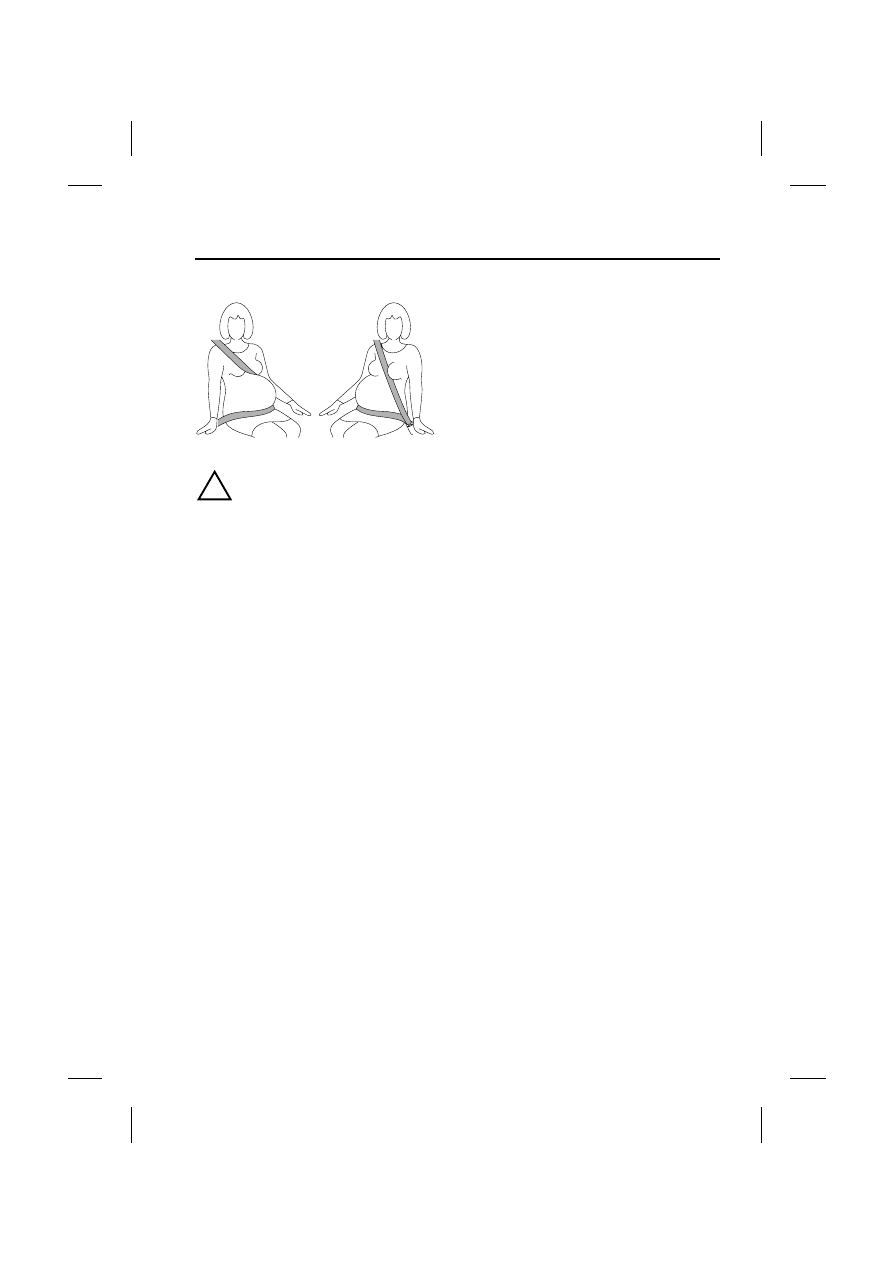Jaguar S-Type. Manual - part 13

57
Occupant Protection
R
Pregnant women
!
WARNING:
• Pregnant women must wear a
correctly positioned seat belt; it is
safer for the mother and unborn
child.
• Never wear just the lap strap of a
lap and shoulder diagonal seat belt
and never sit on the lap strap using
just the shoulder strap. Both of
these actions are extremely
dangerous and may increase your
risk of serious injuries.
There are many ways that the seat belt
can be misused for the sake of comfort.
However, there is only one way of wearing
it safely.
The lap strap should be fitted comfortably
across the hips, low beneath the pregnant
abdomen. The diagonal part of the seat
belt should be placed between the
breasts, and worn above and to the side
of the pregnant abdomen.
Never place anything between you and
the seat belt in an attempt to cushion the
impact in the event of an accident. It can
be dangerous and reduce the
effectiveness of the seat belt in preventing
injuries.
Always wear seat belts without slack or
twists, since slackness in a seat belt
drastically reduces the effectiveness of
the belt and the level of protection it can
provide. For optimum protection, the seat
belts should fit tightly around the body.
Do not recline the front seats excessively,
as the belts provide maximum protection
when the seats are in the near upright
position.